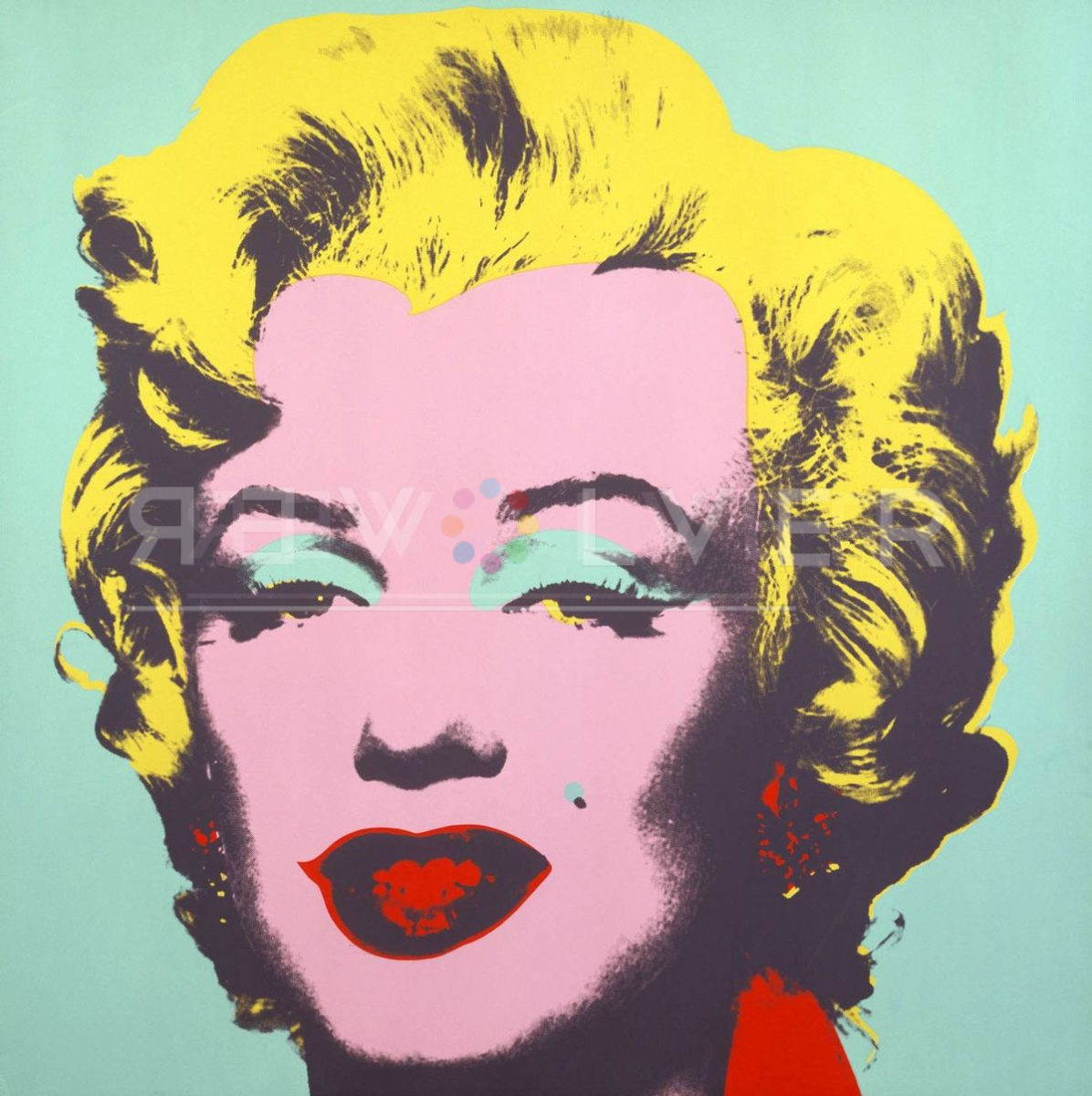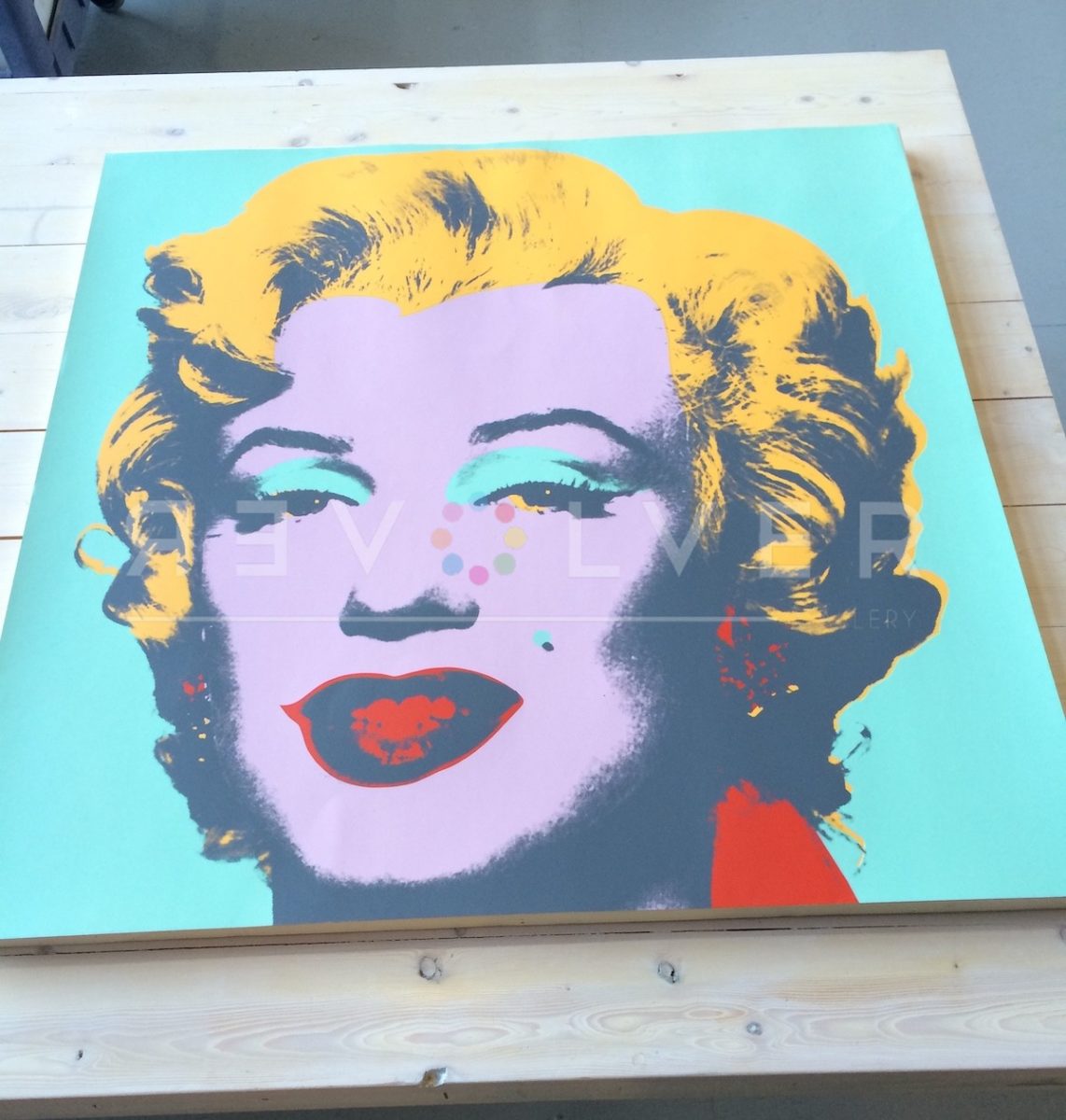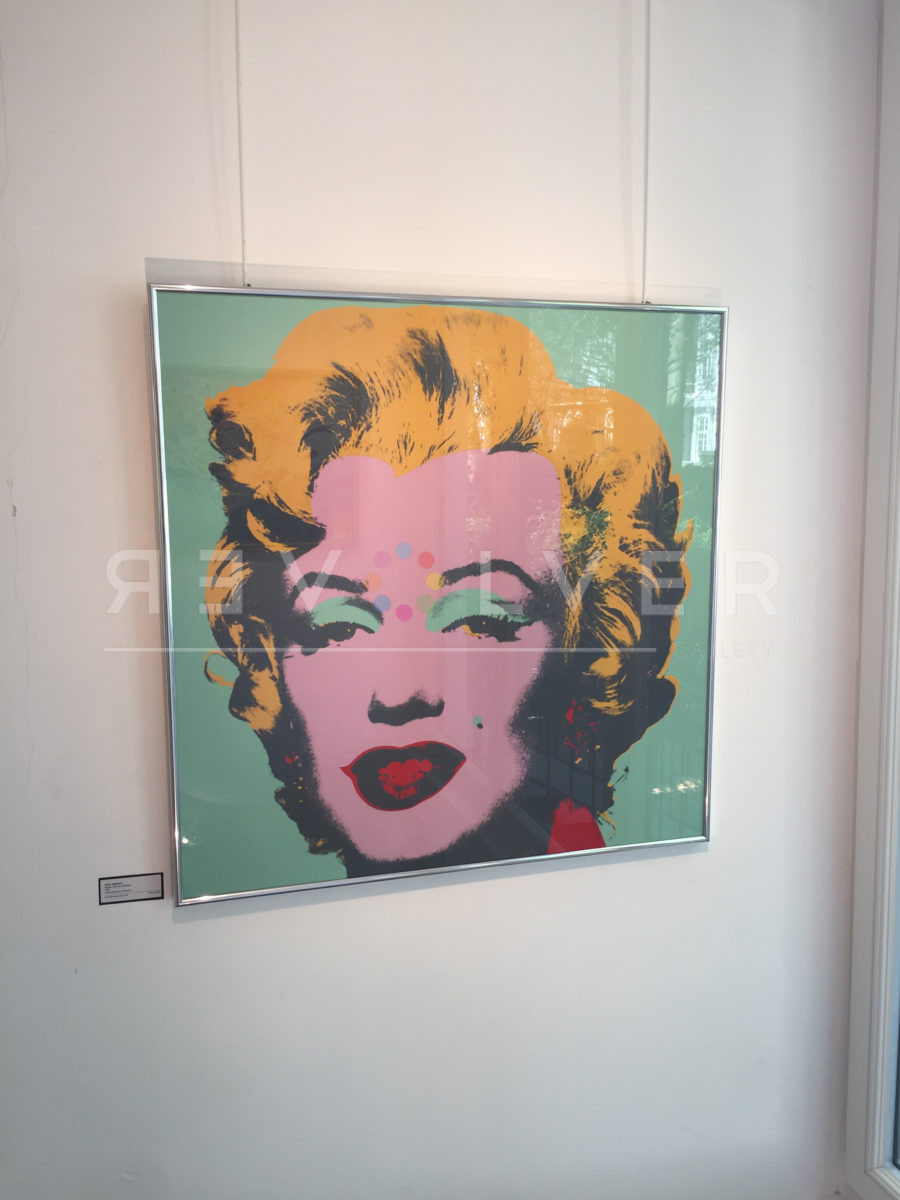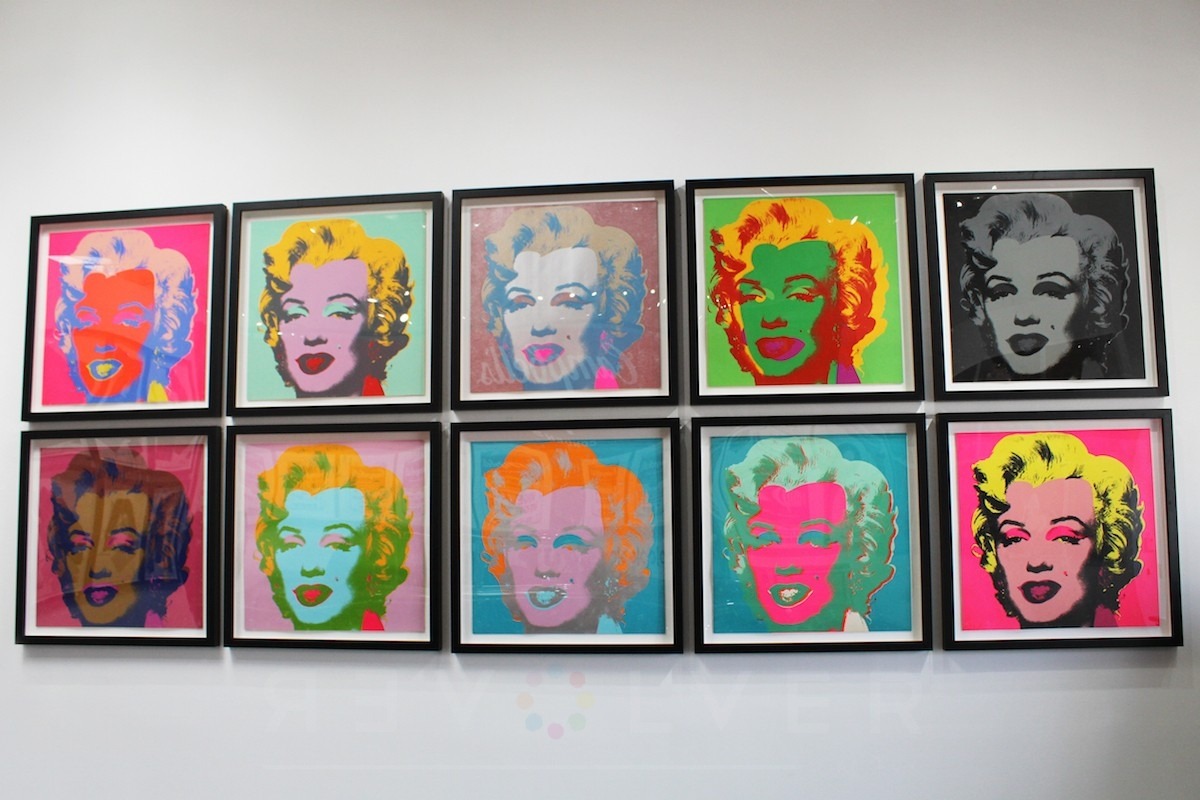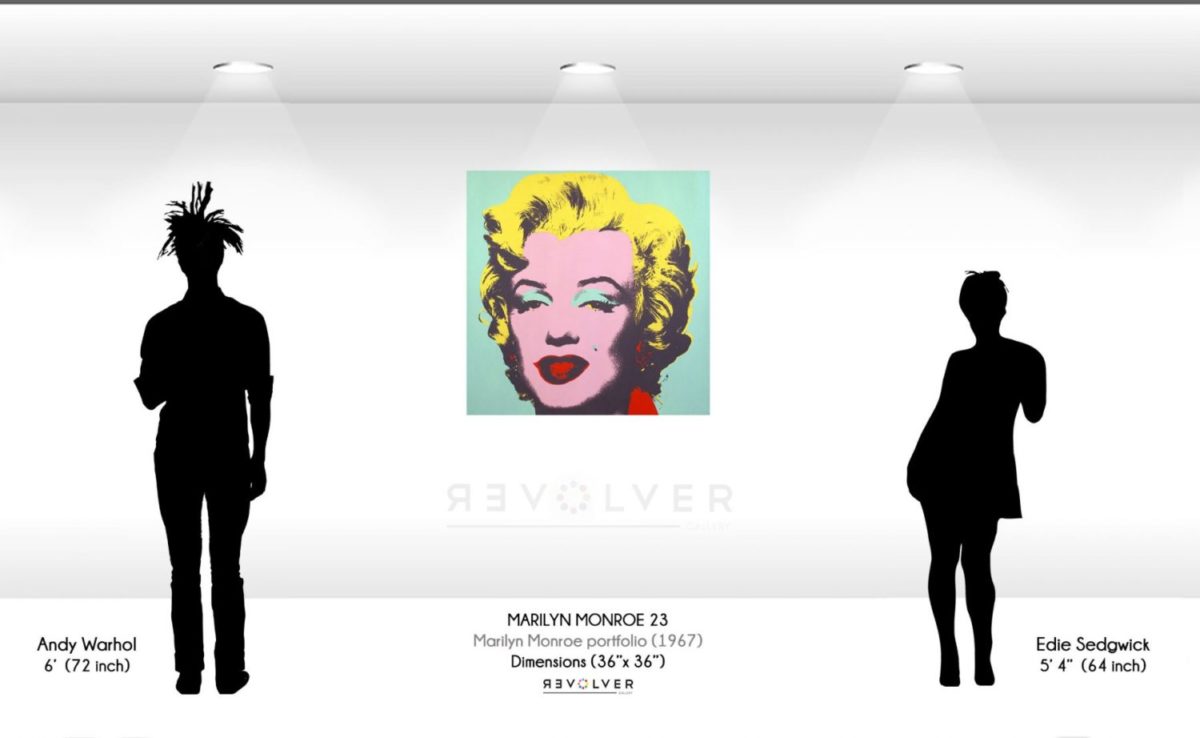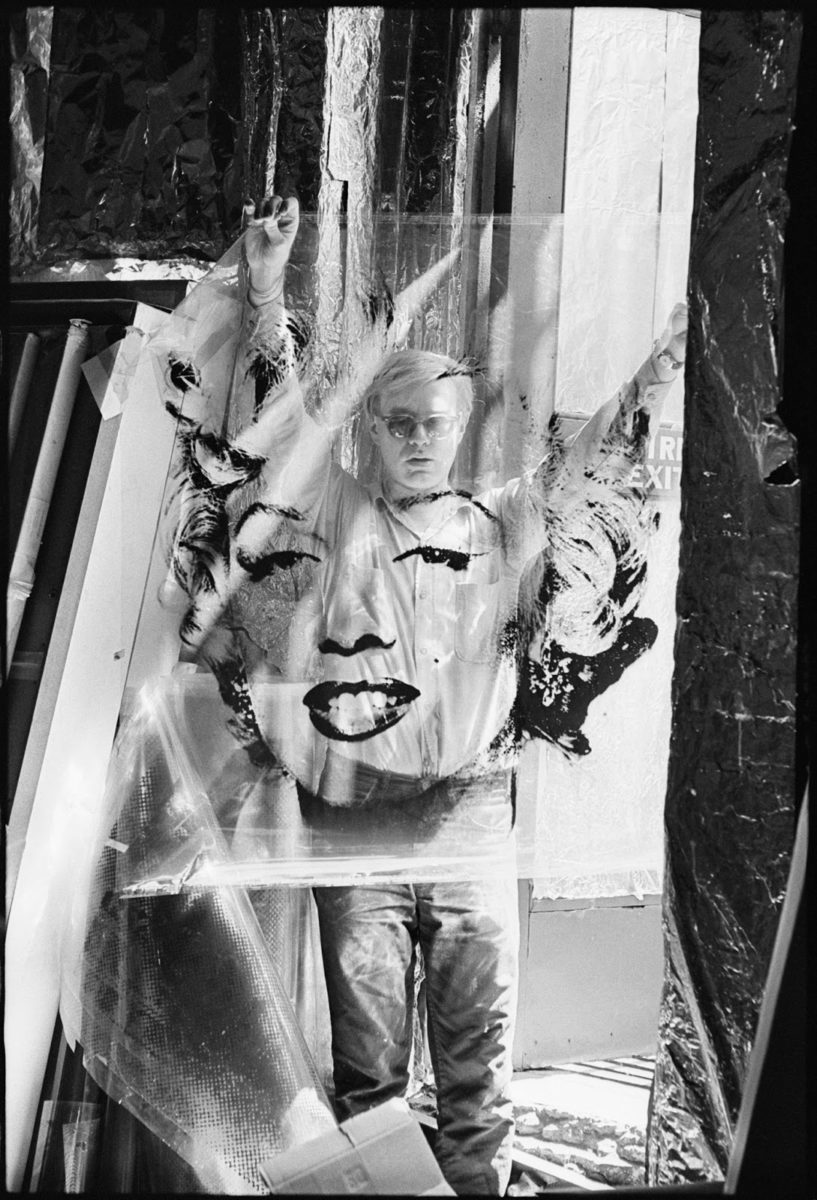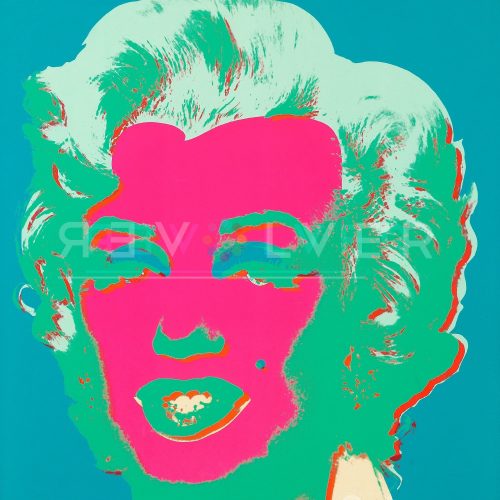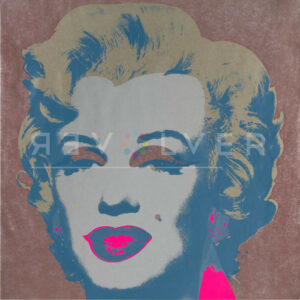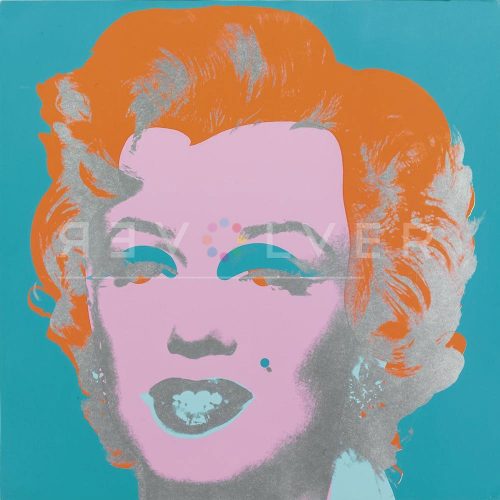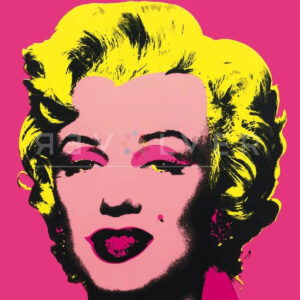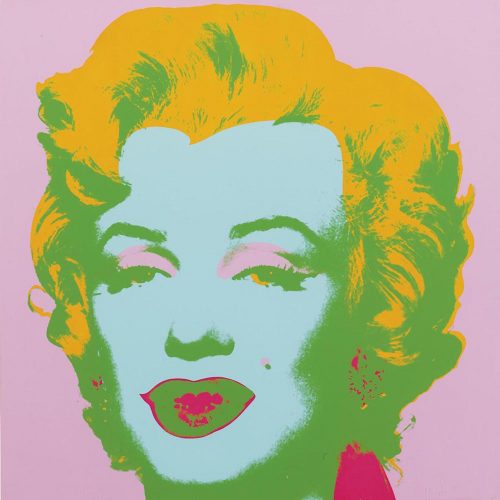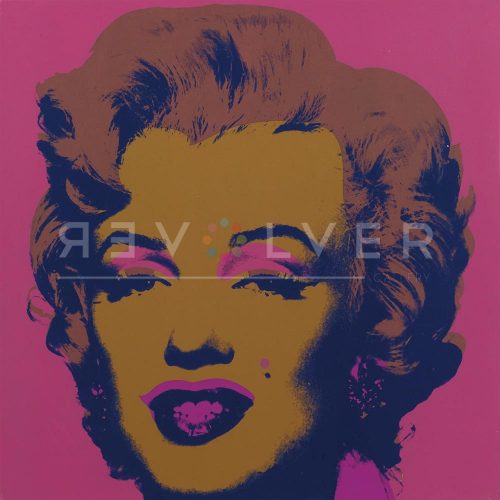Marilyn Monroe 23 is a classic screen print by Andy Warhol which appears in his Marilyn series from 1967. This version may be referred to as the turquoise Marilyn, or “yellow” in reference to the hair. The work expresses Warhol’s acclaimed pop style, and presents the actress in vibrant hues and flat regions of color: a signature of Warholian technique. The Marilyn prints are archetypal of the Pop Art movement, which Warhol championed with pieces like Campbell’s Soup Cans. The portfolio presents Marilyn Monroe as an icon of pop-culture, and reflects many of Andy’s curiosities.
Originally, Warhol painted Monroe’s portrait in Marilyn Diptych (1962). Soon after her death, he became entranced with the actress as a hyperreal image of glamour and fame. Being sensitive to the public’s attention, Warhol also noticed how Monroe’s reputation evolved after her tragic suicide. For every Marilyn creation, Warhol used the same photograph: a publicity shot taken by Gene Korman for Marilyn’s 1953 film Niagara. The portfolio thus attracted some notoriety. The art world began to question an artist’s ability to appropriate a repeated symbol before it becomes a copyright issue. Regardless, the Marilyn portraits were highly successful, and became some of Warhol’s most recognizable prints.
In the series, many themes of Warhol’s multi-dimensional artistic philosophy are present. While celebrity life and the concept of fame entranced him, he also found inspiration in more common areas of life. Consumer culture, mass-production, and the modern miracles of industrial advancement all inspired him; hence, his renditions of Coca-Cola, Kellog’s Corn Flakes, and Campbell’s Soup. Indeed, Warhol had a very positive view of capitalism and quotidian consumption. He appeared obsessed by anything that was hyper-visible in the world. Thus, whether Warhol was painting grocery store items, or celebrities like Liz Taylor, Mick Jagger, or Marilyn Monroe, he was focused on overlapping ideas of consumption, entertainment, and commercial and industrial production.
For Warhol, Marilyn was the quintessential celebrity. In the portfolio, he presents Marilyn Monroe not as a single individual, but as an idea. Her face shows no imperfections, Warhol bathed her in a myriad of vibrant colors, and screen printed her repeatedly. Through this method, the Marilyns exhibit Warhol’s central theme of mechanical reproduction. Indeed, over the course of his life, he created hundreds of Marilyn prints (including trial proofs and numbered editions). Moreover, Andy’s portfolio attains a consciousness of the way identity is commodified, and reflects the visual diet of mid-century America. As a highly successful Hollywood superstar, Marilyn’s image was mass-produced and broadcasted to viewers across the country.
Seeking to capture the cultural mood of his society, Andy reproduces Marilyn not as she lived, but as she existed in the mind of the public. The Marilyn portraits illustrate the dreams and aspirations of a culture transfixed on the world of entertainment and starlight. Warhol presents a grandiose symbol of the entire American spectacle. He allows his audience to confront their own imagination of luxury and limelight.
Ultimately, Marilyn Monroe 23 is one of Warhol’s most powerful images. Warhol created an “icon out of an icon,” accentuating Monroe’s legacy in the history of entertainment as well as visual art. Many of his fascinations are present in the portfolio, and the work proved extremely important in the acceptance of pop-art into the echelons of the high art scene. Marilyn Monroe 23 remains as a highly sought after piece of Warhol’s legacy. The Marilyn portraits continue to sell for top dollar in the blue-chip art market, and are some of the most significant works of modern art.

